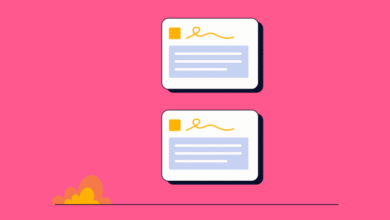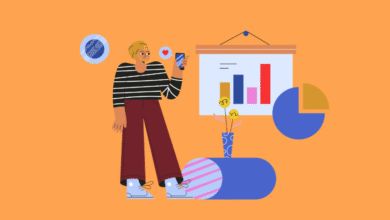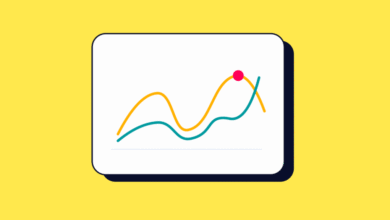
You launch a new Meta campaign. Everything looks solid, targeting is on point, budget is set, creative is ready. But a few days in, you see it: “Learning.” Then “Learning Limited.” And the numbers? They’re all over the place.
Sound familiar?
The learning phase is a critical part of how Meta Ads work. It’s when the platform tests different delivery combinations to figure out who to show your ads to, and when. But it’s also one of the most misunderstood and frustrating parts of running performance campaigns, especially now.
That’s because the rules have changed.
Meta has become stricter about what counts as stable performance. Campaign edits reset learning more easily. Smaller ad sets get flagged more often. And signal loss from iOS changes means campaigns take longer to collect the data they need. All of this can stall performance before it even gets started.
But here’s the good news: the learning phase isn’t random. You can exit faster, if you know what to watch for, and what to avoid.
In this guide, we’ll walk through:
Subscribe to our mailing list to get the new updates!
- What the learning phase actually is (and what’s new in 2025)
- Why so many ad sets get stuck in “Learning Limited”
- Practical steps to exit the learning phase faster, without blowing your budget
- And what to do if your campaign just won’t stabilize
What Is the Meta Ads Learning Phase?
Think of the learning phase as Meta’s way of figuring out how to deliver your ad most effectively. Every time you launch a new ad set or make significant changes, Meta needs time to test different combinations -who sees your ad, when, where, and how often- to determine what works best.
During this period, delivery can be volatile. You might see inconsistent results, higher CPAs, and a lack of clear performance patterns. That’s normal. The algorithm is gathering data, not optimizing just yet.
So what does Meta actually need in order to exit learning mode?
In most cases, your ad set needs around 50 optimization events within a 7-day period. That could be 50 purchases, leads, add-to-carts, whatever conversion event you’ve chosen as your primary goal. Until Meta reaches that threshold, it doesn’t have enough information to confidently shift into full optimization mode.
While this baseline hasn’t changed much over the years, how Meta handles the learning phase has. According to Meta’s updated guidelines, ad sets that fail to gather enough events quickly are now more likely to be flagged as “Learning Limited.” That means Meta sees potential, but doesn’t have enough data to act on it.
If you’re running multiple small ad sets, frequently editing your campaigns, or optimizing for low-frequency events, you’re much more likely to get stuck. And once you’re in that “limited” status, your ads may struggle to deliver consistently or scale effectively.
But here’s the important part: the learning phase isn’t a penalty. It’s a signal. When things stall out here, it’s Meta’s way of telling you something in your setup needs attention, structure, signals or strategy.
Let’s look at what’s changed behind the scenes.
What Has Changed in the Learning Phase Rules
Meta’s learning phase hasn’t just gotten stricter, it’s gotten more sensitive. The core mechanics are the same, but the way Meta evaluates stability and signal quality has shifted. And that’s made it easier than ever to get stuck before your campaign has a chance to shine.
Stability Is Now Non-Negotiable
In the past, you could get away with tweaking your ad sets mid-flight. A budget adjustment here, a new creative test there, and Meta would more or less continue learning in the background.
Not anymore.
Today, even small edits are enough to reset the learning phase. Changing your audience, budget, placements or creative components will start the process from scratch. This means each adjustment delays performance maturity, and repeated edits can trap you in an endless loop of volatility.
What used to be a flexible optimization window has become a high-stakes stabilization period. Meta wants you to set it up, then back off, at least until the algorithm finishes its learning process.
Signal Quality Is Under More Pressure
Post-iOS14, Meta doesn’t receive the same volume or quality of conversion signals as it once did. As a result, the algorithm takes longer to collect usable data, especially for ad sets targeting smaller audiences or lower-frequency conversion events.
In other words, even if you’re running solid campaigns, Meta may simply need more time to understand what “success” looks like. And that time often comes with higher CPAs and murkier reporting.
This is where tracking accuracy and event match quality make a real difference. If Meta isn’t confident in your signals -because of poor data hygiene or mismatched identifiers- it may never fully trust the results enough to exit learning.
Smaller Audiences Struggle, Broad Ones Wait Longer
One side effect of these changes is that smaller retargeting pools or niche interest audiences now have a harder time exiting learning. They often can’t deliver enough events quickly enough to meet the 50-event benchmark. On the flip side, broad audiences, while scalable, can take longer to find their footing because the algorithm has a wider search field to test.
This means segmentation and scaling tactics that worked a year ago may now need a rethink. You might not need to abandon your structure but you may need to consolidate, simplify, and let Meta do more of the decision-making upfront.
The platform has evolved. But with the right structure, you can still get it to learn, and win faster.
How to Exit the Meta Learning Phase Faster
Escaping the learning phase isn’t about hacking the system. It’s about setting Meta up to succeed from the start. That means giving it enough data, minimizing disruptions and making smart choices about how your campaigns are structured.
Here’s how to help your ad sets move through learning efficiently.
Consolidate Your Campaign Structure
One of the most common reasons ad sets get stuck is fragmentation. If your budget is spread across too many ad sets or your audience is sliced into overly specific segments, each piece might struggle to gather enough events.
Instead, try simplifying. Combine similar audiences and creatives into fewer ad sets. This gives Meta a larger pool to work with and increases the chances of hitting that 50-event threshold more quickly.
Think fewer levers, more momentum.
Avoid Frequent Edits
Every time you tweak an active campaign -budget, creative, placements, audience- you reset the learning clock. Even changes that seem minor can push your ad set back to square one.
If you want to test a new idea, it’s usually better to duplicate the ad set and launch it as a new version. This way, your original performance isn’t disrupted, and you can compare results cleanly.
Make fewer changes, and let Meta gather uninterrupted data before making decisions.
Optimize for Events That Actually Happen
If you’re running a cold campaign and optimizing for Purchase right out of the gate, you might be setting yourself up for frustration. High-value events like Purchase or Subscribe tend to be lower in volume, especially early on.
Consider starting with an event that occurs more frequently like Add to Cart, Lead or View Content. Once you’re seeing volume and exits from the learning phase, you can optimize for deeper conversions later.
Progress is better than perfection on day one.
Use Advantage+ or Campaign Budget Optimization (CBO)
Meta’s automation tools like Advantage+ shopping campaigns and CBO are designed to speed up learning. Instead of manually assigning budgets to each ad set, these tools let Meta allocate spend where the algorithm sees early signals of success.
This creates a more fluid learning environment, especially when paired with well-defined conversion goals and clean creative variety.
Let the system do the heavy lifting. Just make sure the structure feeding into it is sound.
Improve Your Signal Quality
You’ve probably heard this before, but it’s worth repeating. Clean, fast, accurate data is what fuels Meta’s delivery engine. That includes:
- Using the Conversions API alongside the pixel
- Making sure events fire correctly and immediately after the user action
- Verifying that customer data (emails, phones) is matched properly in your event setup
Good signals don’t just help Meta learn faster. They build trust in your data, which means more confident optimization, better cost efficiency and less guesswork in reporting.
What to Do If You’re Stuck in Learning Limited
Getting flagged as “Learning Limited” can feel like a dead end. Your campaign is active, but Meta is telling you it doesn’t have enough data to optimize. You’re spending money, but not learning much. The good news is that this label isn’t permanent, and it’s often fixable with a few smart adjustments.
Start by Identifying the Bottleneck
Before making changes, step back and ask: Why isn’t this ad set getting enough optimization events? Is the audience too small? Are you optimizing for a rare event? Are you using multiple ad sets that are competing for the same budget?
In many cases, the issue comes down to structure. Too many ad sets with overlapping goals, or too narrow a targeting pool, can water down your results. Consolidating underperforming ad sets or widening your audience slightly can help the algorithm gather data more efficiently.
Consider a Simpler Optimization Event
If you’re optimizing for Purchase but only getting a handful per week, try switching to Add to Cart or even View Content. These events occur more frequently and can help you build momentum. Once you’ve moved out of learning and have steady volume, you can re-optimize for deeper conversion points.
This doesn’t mean lowering your standards it means meeting the algorithm where it is, then scaling once you have traction.
Give It Time, but Don’t Wait Forever
Some campaigns just need time. If you’re seeing decent results and consistent conversions, even while in Learning Limited, it may be worth holding steady for a few more days.
But if you’ve been in that state for over a week with no meaningful improvement, it’s time to act. At that point, your campaign has likely plateaued and needs a reset in audience, budget or goal structure.
Patience is part of the process but so is knowing when to pivot.
The Learning Phase Is Inevitable, but It Doesn’t Have to Stall You
Every Meta campaign goes through a learning phase. It’s not a glitch, it’s how the platform figures out what works. The mistake most advertisers make isn’t launching imperfect campaigns. It’s panicking too early, tweaking too much and resetting the learning loop before it has a chance to complete.
Exiting the learning phase faster doesn’t require hacks. It requires a thoughtful structure, stable conditions and clean signals. If you can give Meta enough room to learn without constantly shifting the rules, you’ll unlock performance that scales with confidence.
So instead of fearing the learning phase, treat it like what it really is: a calibration period. Your goal isn’t to skip it. Your goal is to get through it with clarity and momentum.
And now, you know how.
Wanna see how your website perform?
Let's run a comprehensive technical SEO audit for your website and share a compelling SEO strategy to grow your online business.
SEO Audit →


